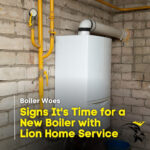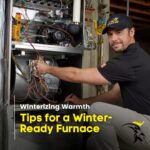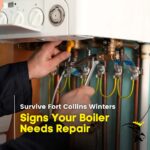As the colder months approach and you fire up your furnace for the first time in a while, it’s essential to be prepared for any issues that may arise. Furnace problems often tend to manifest when we least expect them. Here, we will discuss 10 common furnace issues you may encounter and how to address them effectively.
Air Filter Change
The simplest yet crucial maintenance task is changing your furnace’s air filter regularly. Check it monthly and replace it at least quarterly. Doing so ensures efficient airflow and extends your furnace’s lifespan. Refer to your furnace’s manual or model number to find the right filter size.
Wear and Tear
Furnaces age, and older models are less energy-efficient. If your furnace requires frequent repairs or is nearing its lifespan (usually between 15-30 years depending on maintenance), consider replacing it to save on monthly utility bills.
Thermostat Issues
Sometimes, the problem lies with the thermostat, not the furnace. Ensure your thermostat is set correctly and has working batteries. If necessary, replace the thermostat, a task you can often do yourself or with professional assistance.
Power Problems
Check if your furnace is plugged in and ensure the associated breaker is not tripped, especially after a power outage. Verify that your furnace is receiving power before calling for HVAC service.
Not Hot Enough
If the air from your vents doesn’t feel warm enough, or you constantly adjust the thermostat, there may be technical issues with your furnace. It could also be due to a clogged air filter or blocked air intake vents.
Not Hot At All
If your furnace isn’t producing any warm air, there might be an issue with the pilot light or ignition. In such cases, it’s best to contact professionals to ensure safety, accurate diagnosis, and proper repairs.
Turning On & Off Frequently
Frequent cycling may result from improper airflow due to blocked air intake vents or a malfunctioning thermostat. Start by checking the thermostat and vents, then consult an HVAC expert if necessary.
Always Running
If your furnace seems to run continuously, it could be due to a faulty limit switch. This can lead to excessive wear and tear on your furnace, so address this issue promptly.
Heat Exchanger Issues
Problems with the heat exchanger are serious and potentially dangerous. These issues are often a sign that your furnace has reached the end of its life. Address heat exchanger problems with professional assistance and consider replacing the furnace.
General Lack of Maintenance
Regular maintenance is key to preventing most furnace issues. Schedule routine maintenance inspections to catch and address problems early, saving you from costly repairs or replacements.
At Lion Home Service, we offer a Total Care Club membership program to help homeowners proactively maintain their heating and cooling systems. Clients who enroll in the Total Care Club gain access to exclusive benefits, which can result in significant savings on repairs and services.
To learn more about our Total Care Club and how it can help you save money on large purchases and regular maintenance services for your plumbing and heating and cooling systems, visit our membership details page. If you encounter any furnace problems, don’t hesitate to reach out to our team of experts at (970) 510-0522 for professional assistance.
We offer 5-star heating services in the following locations:
- Fort Collins heating
- Loveland heating
- Greeley heating
- Longmont heating
- Windsor heating
- Boulder heating
- Berthoud heating
- Brighton heating
Leave our Fort Collins heating specialists a review or learn more about our services below:
Looking for help with your Tampa heating? Well, then check out the services offered by our friends over at ACS Home Services! They offer everything from HVAC to plumbing and even electrical. Look them up in the following locations today:









